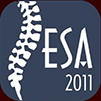Subject Area
Trauma
Article Type
Original Study
Abstract
Background: Lumbar degenerative disc disease (DDD) is one of the leading causes of disability worldwide. Imaging is crucial when assessing these conditions. Computed tomography (CT) and magnetic resonance imaging (MRI) provide helpful information for optimal diagnosis and decision-making. However, MRI is expensive and only available in some centers in low-income countries. This study aims to evaluate CT as an imaging modality for decision-making in lumbar DDD without MRI.
Methods: This prospective cross-sectional study assessed the expert panel-based diagnostic accuracy of an index test versus a reference standard in 30 patients who presented with lumbar DDD. All patients were submitted for full clinical and radiographic evaluation, including plain X-rays, CT, and MRI. Then, images were reviewed by 10 expert spine surgeons in two sessions blindly—one session with CT and another session with MRI—after two weeks to assess decision changes according to the different imaging modalities (CT versus MRI).
Results: The mean age of the studied patients was 44.57 years. Lumbar canal stenosis, lumbar disc prolapse, and degenerative spondylolisthesis were reported in 10 (33.3%), 15 (50%), and 5 (16.6%) patients, respectively. The degree of agreement regarding decision according to CT k degree was 90.3% (P < 0.001), while for MRI k degree, it was 96.8%. There was a significant difference between surgeons’ decisions based on CT and those based on MRI (P < 0.001). Conservation with follow-up was reported in 6.7% and 7.3% of CT and MRI decisions, respectively. Furthermore, 12% of CT-based decisions were not confirmed and required further evaluation with MRI, 41% were changed after MRI, and 47% were not changed after MRI.
Conclusion: Our data suggest that MRI is the modality of choice in diagnosing lumbar DDD. MRI better visualizes Modic and degenerative changes, and disc signals, and herniation than CT. Surgeons are more comfortable with making their decisions based on MRI. Low-income countries should save resources and effort to obtain MRI scans.
Keywords
Computed tomography scan, Magnetic resonance imaging, Degenerative lumbar disease, Decision-making
How to Cite This Article
Elnady, Belal MD; Amer, Ahmad; ElSherif, Essam MD; and Abdelgawaad, Ahmed Shawky MD, MHBA
(2024)
"Is Computed Tomography Scan Sufficient for Decision-Making in Lumbar Degenerative Disc Diseases in Low-Income Countries?,"
Advanced Spine Journal: Vol. 43
:
Iss.
1
, Article 9.
Available at: https://doi.org/10.57055/2974-4822.1309




















